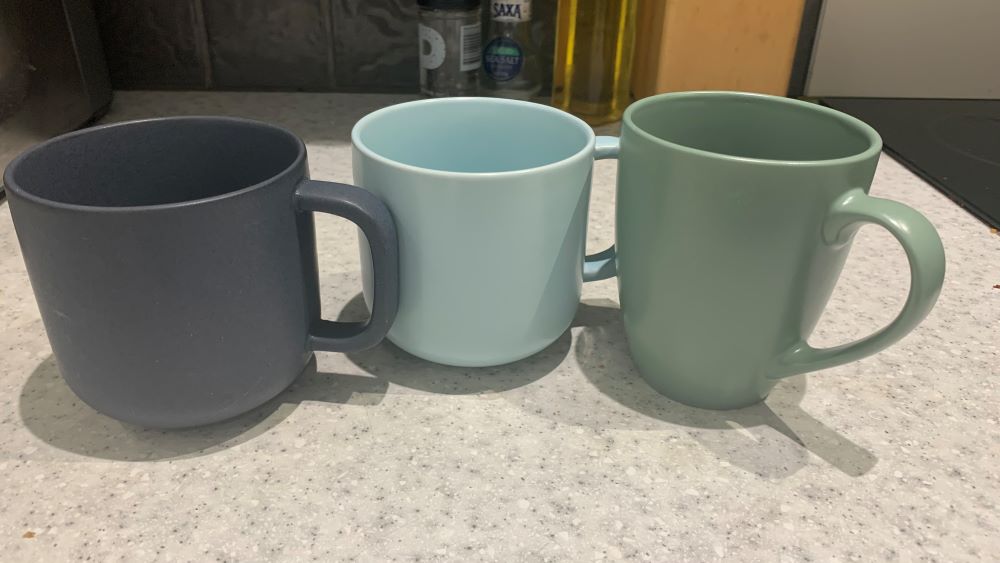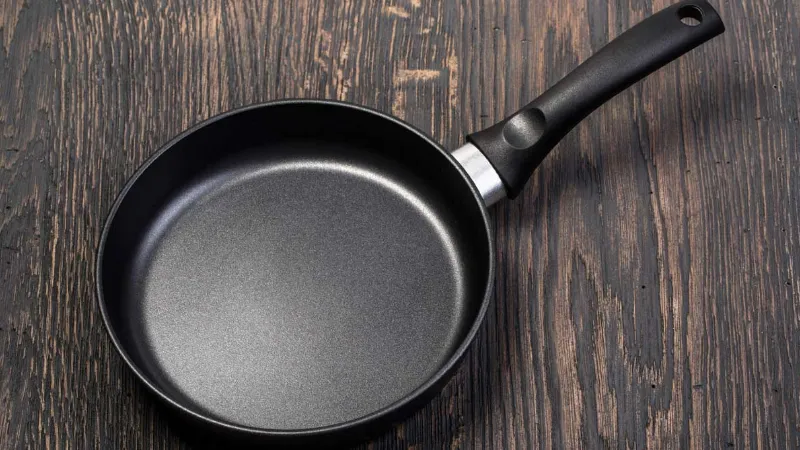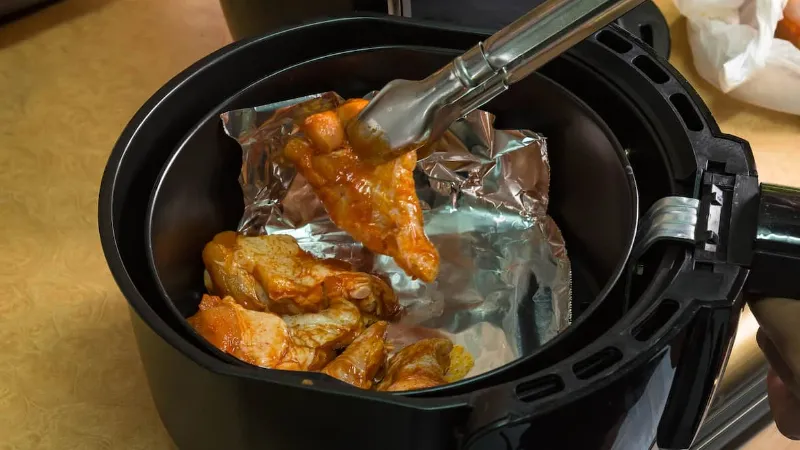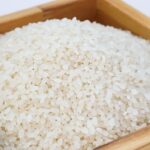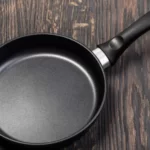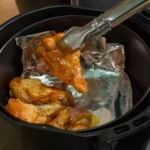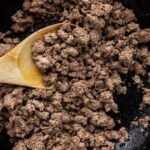Is Stoneware Microwave Safe? Here’s What You Want To know
I’m sure we’ve all had that moment when we debated whether to put a stoneware dish in the microwave. Well, I’m here to specifically respond to that.
So is stoneware safe to microwave?
Yes, stoneware is safe to microwave. If you use stoneware to heat food, it’s likely that neither it nor your microwave will be harmed. It’s not always a wise idea to microwave food with it, though.
The dish becomes extremely hot when microwaved because some stoneware may contain trace amounts of metals and other materials that specifically absorb heat.
Additionally, stoneware isn’t always safe to the microwave because the temperature changes can result in the glaze cracking or even leaking into your food.
But stoneware actually falls into the same material category as ceramics. The real question is whether it can be microwaved or not, depending on how it was made and whether the manufacturer makes that claim.
Here’s the scoop.
Table of Contents
Can You Safely Microwave Stoneware?
First of all, let’s define what the term microwave safe means. When used in the microwave, microwave-safe utensils do not crack, change shape, or emit chemicals.
Now, this question doesn’t really have a clear answer when it comes to stoneware cookware. See, we have two types of stoneware. Stoneware that has undergone a mid-fire is the first category.
It is porous and seems a little bit hard. The fact that it comes in dark hues like grey and brown makes it simple to spot, though.
High-fire stoneware, the other type of stoneware, is much more durable and impervious to porosity than mid-fire stoneware. Only a few colors are available, and the glaze is very noticeable.
This part of the question is crucial right now. We therefore anticipate your interest. Stoneware becomes durable when it is manufactured at higher temperatures. Consequently, it is resistant to breaking at high temperatures.
On the other hand, the result of the less fired stoneware is very delicate and highly porous. For this reason, you cannot microwave it at a high temperature.
Now, when the stoneware is too porous, it quickly absorbs radiation from the microwave and becomes too hot. Using a towel to carry it will be necessary. It will either crack or explode if you keep applying more heat to it.
The bottom line is that you can only use high-fire stoneware in a microwave. Never microwave stoneware that has been through a mid-fire.
What Is Stoneware?
Designed to resemble stone, stoneware is a robust clay product. Because of the makeup of its materials, it is thicker and more opaque than porcelain. Stoneware is the name given to the substance because of the appearance of a stone-like structure that results from exposure to high temperatures.
Two main steps must be followed in order to create stoneware objects. First, mix the clay. Then second, fire the clay in high temperatures ranging from 2000 to 2300 degrees F.
The product category of stoneware is not new. Stoneware was first made by the ancient Chinese. However, in the 18th century, the early explorers transported the stoneware to Europe.
In the 19th century, companies in Europe, for example, Stoneware kitchen utensils were first created by Josiah Wedgwood and his partners. Kettles and cups rose to prominence during this time.
The popularity of stoneware in our homes has increased over time due to its evolution. Sewer pipes, urinals, basins, and dinnerware are all frequently made of stoneware, as well as dishes, cookware, bakeware, and other household items.
Is Stoneware Microwaveable?
A type of earthenware known as stoneware is fired at a high temperature, increasing its durability. Additionally, it can withstand heat beautifully and is chip-resistant. Due to these qualities, it is a preferred option for dinnerware and decorative items.
Stoneware can generally be microwaved. But be aware that some stoneware might have high levels of lead and arsenic that can seep into your food when it’s microwaved. Additionally, bear in mind that some stoneware may retain a lot of heat and result in burns.
When ingested, toxic metals like lead and arsenic can have harmful side effects.
Arsenic is a recognized carcinogen, which means that it can result in cancer. It has also been connected to diabetes, heart disease, and other health issues.
Children who are exposed to lead may experience serious health issues. In addition to causing behavioral issues of every kind and stunted physical development, it can harm the brain and nervous system.
You should pay close attention to where stoneware is made to avoid microwaving food in items that contain lead or arsenic.
Although stoneware cookware and bakeware from all over the world can be contaminated, you should take extra care with stoneware made in China because the nation lacks adequate regulations for the ceramics industry.
Observing the glaze is one method of identifying stoneware dishes with lead glaze. Lead is more likely to be present in dishware that is highly decorative and shiny.
The substance that some stoneware is made of is another issue that is equally crucial. Metals that absorb microwave energy are present in trace amounts in them. This could be a problem because the dish might become overheated and possibly burn your hand.
Many people have written about their encounters with too-hot stoneware. Many of them advised people not to heat this dish in a microwave. See more about Can You Microwave Parchment Paper?
The Benefits Of Using Stoneware Dishes
Stoneware dishes have the advantage of improving baking considerably. Baking is easier, and cleanup is also much simpler.
Utilizing stoneware in the microwave is acceptable. These dishes are ideal for microwave cooking, baking, and roasting because they provide even baking and browning.
The best part is that this kind of food retains heat well. Consequently, it’s a preferred option for dishes to be used in cooking.
Dishes made of stoneware are made of clay mixed with mica, quartz, or feldspar. They are renowned for their resilience in the face of extreme temperatures and ease of cleaning. They are a common option for people looking for oven- and stovetop-safe dishes.
The Risks Of Microwaving Stoneware
Make sure to follow the manufacturer’s instructions when microwaving stoneware. Some ceramic brands have toxic chemicals in them that can seep into your food.
When using your microwave, exercise caution because some foods are not microwave-safe.
Stoneware can burn you if you touch it or crack and interfere with the microwave. All stoneware that can be microwaved should be used.
Microwaving is great for almost everything, but stoneware has some special considerations that need to be taken into consideration when using
What Distinguishes Ceramic Ware From Stoneware?
You might be surprised to learn that ceramics include items like porcelain, stoneware, and earthenware. You should be aware of a few differences between stoneware and ceramicware before using your microwave.
Using extremely high temperatures, stoneware was produced, a type of ceramic. Both stoneware and ceramics are generally safe to microwave.
Having a thick, opaque, stone-like appearance, stoneware is a category of ceramic ware. The majority of other ceramics, on the other hand, appear translucent.
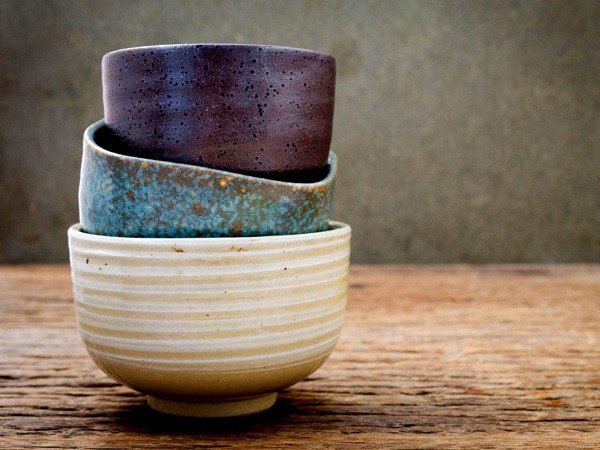
Types Of Stoneware Better Than Others For Microwave Cooking
For microwave cooking, some varieties of stoneware are preferable to others. Cast iron, for instance, is much more resilient than porcelain or stoneware, but it cannot be used for microwave cooking. Because stoneware or porcelain are frequently made to withstand high temperatures, this is the explanation. They are made in this way because they are typically made of clay, and porcelain is a type of clay.
In comparison to other microwave-safe dishes, ceramics require more care when cooking in the microwave. The ceramic absorbs the microwave radiation, which leads to its heating up, decomposition, cracking, or chipping. Microwaves do not heat ceramic to a point where it would be destroyed or suffer serious damage from the outside, but they do alter the properties inside. Expect it not to because the outside of a microwave-safe item isn’t made to withstand temperatures that are hotter than what you can achieve inside a microwave oven.
To make it easier for the cook, microwave-safe dishes are sometimes color-coded or marked with symbols. This eliminates the need for the cook to keep track of which cups and plates are microwave-safe or not.
When buying their ingredients, those who own a stoneware cooker and want to have the best microwave cooking experience should exercise caution. Make sure the material you choose for your cookware won’t react poorly in the microwave before purchasing it.
How Can I Tell If My Stoneware Is Microwave-safe?
It’s crucial to understand that some foods can safely be microwaved while others cannot.
It’s crucial to inspect the dish before using stoneware. Put your dish in the microwave and wait for a few minutes if you’re unsure of whether it can be heated in the appliance. The dish is probably not microwave-safe if it gets hot to the touch or becomes heated up.
The label of the item or contacting the manufacturer will reveal whether a dish is microwave-safe. It is not safe to use a dish in a microwave if it is not marked as microwave-safe.
As long as it doesn’t have a gold or silver rim, stoneware can be heated in a microwave. These rims are typically made of a metal or alloy, and when heated in a microwave, the waves are absorbed by the metals and reflect back like light off of a mirror. Sparks are produced when this energy, combined with the electrons already present on the metal’s surface, draws additional electrons from the atmosphere.
On the packaging, look for the Microwave-Safe symbol to determine whether something is safe to microwave. If there is, it can be safely microwaved.
Call the plate’s manufacturer if you’re unsure. It’s likely that the company only makes microwave-safe kitchenware. However, I advise against using the plate in the microwave if that doesn’t work.
I’d like to add a suggestion: if you find it difficult to remember which plate can go in the microwave and which can’t, you might want to consider permanently marking your plates. To indicate whether something is microwave-safe or not, you can either use a permanent marker or even a small piece of tape at the bottom of the plate.
Stoneware Pottery Can Be Microwaved.
Yes, you can microwave stoneware pottery. The high-fire stoneware pottery can only be used in a microwave, though. The fact that high-fire stoneware can be used in ovens with high temperatures up to (176° C) is its best feature.
On the contrary, the mid-fire stoneware cannot withstand high microwave temperatures. Because of its excessive porosity, stoneware is likely to blow up in the microwave. See, microwave radiation can readily be absorbed by porous utensils, which eventually leads to their disintegration.
Now the question arises, how do you differentiate high-fire stoneware from mid-fire stoneware? The appearance of high-fire stoneware is quite dense. The glaze appears to leach into the clay, unlike the glaze used on mid-fire stoneware, despite having colors that are similar to those of that material.
On the other hand, the mid-fire stoneware is a bit light compared to the high-fire stoneware. The high-fire stoneware is less glassy than this as well. Its glaze also doesn’t mix with clay. It remains separate.
Make sure to warm the microwave before setting the high-fire stoneware aside. Stoneware that has undergone a high fire is safe to use in a microwave, but you shouldn’t expose it to sudden changes in temperature because it could blow up.
Does Stoneware Heat Up In The Microwave?
Yes, stoneware gets hot in the microwave. If you are not careful, you might find yourself in the burns unit of the closest hospital.
Before handling any stoneware that has been in a microwave, you should be aware of a few things. The first thing you need to know is that some stoneware cookware is made from clay and other radiation-absorbing materials.
As a result, when you microwave it, it absorbs too much radiation and heats up.
Second, you need to understand that opaque materials easily absorb heat. This claim has long been made, and we’re confident that you heard it in one of your physics classes.
Due to the fact that stoneware is opaque, when you microwave it for a while, it instantly gets hot.
Thirdly, stoneware utensils trap water inside. Therefore, it is likely that the utensils will become too hot. Breakage is even possible if you are not careful.
Finally, as we mentioned earlier, mid-fire stoneware is porous. Because of this, it absorbs all the heat from the microwave and gets very hot.
However, we advise against using mid-fire stoneware in the microwave. Instead, always use high-fire stoneware in the microwave.
The Microwave Can Cause Porcelain To Explode.
Yes, Porcelain can explode in the microwave. Don’t get alarmed just yet, though. Only a few careless mistakes could lead to an explosion.
The majority of porcelain cookware is produced in China, which has an unregulated market. As a result, you run the risk of buying poor quality porcelain if you are not careful. The inferior kitchenware will blow up when it comes into contact with heat.
Make sure to buy china porcelain only from reputable companies if you must.
In addition, most porcelain utensils are trimmed with metal accents such as gold bands and platinum. Although the metallic trim gives the porcelain a touch of elegance, it is extremely hazardous.
Metals contain substances that can easily start a fire. Therefore, to confirm that the kitchenware is microwave-safe, make sure you read the message at the bottom before putting your porcelain utensils in a microwave.
Lastly, porcelain is prone to thermal shock. Don’t subject the kitchenware to sharp temperature changes as a result. Make sure to pre-heat your microwave if you intend to reheat some leftovers that are frozen.
Conclusion
While stoneware dishes are typically microwave-safe, it’s important to do your research. In order to determine whether your product can be microwaved safely, read the manufacturer’s instructions.
Keep in mind that some stoneware may contain high levels of lead and arsenic, which can leach into your food when microwaved. As a result, you may want to carefully inspect the item before placing it in the microwave.
Also keep in mind that some stoneware may retain a lot of heat and may burn if microwaved.
Don’t microwave the dish if you have any reservations about doing so.
Regarding your reading, I thank you.

